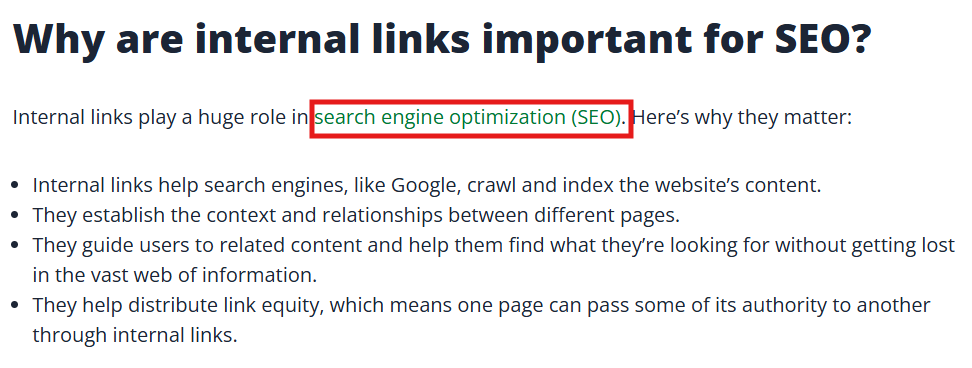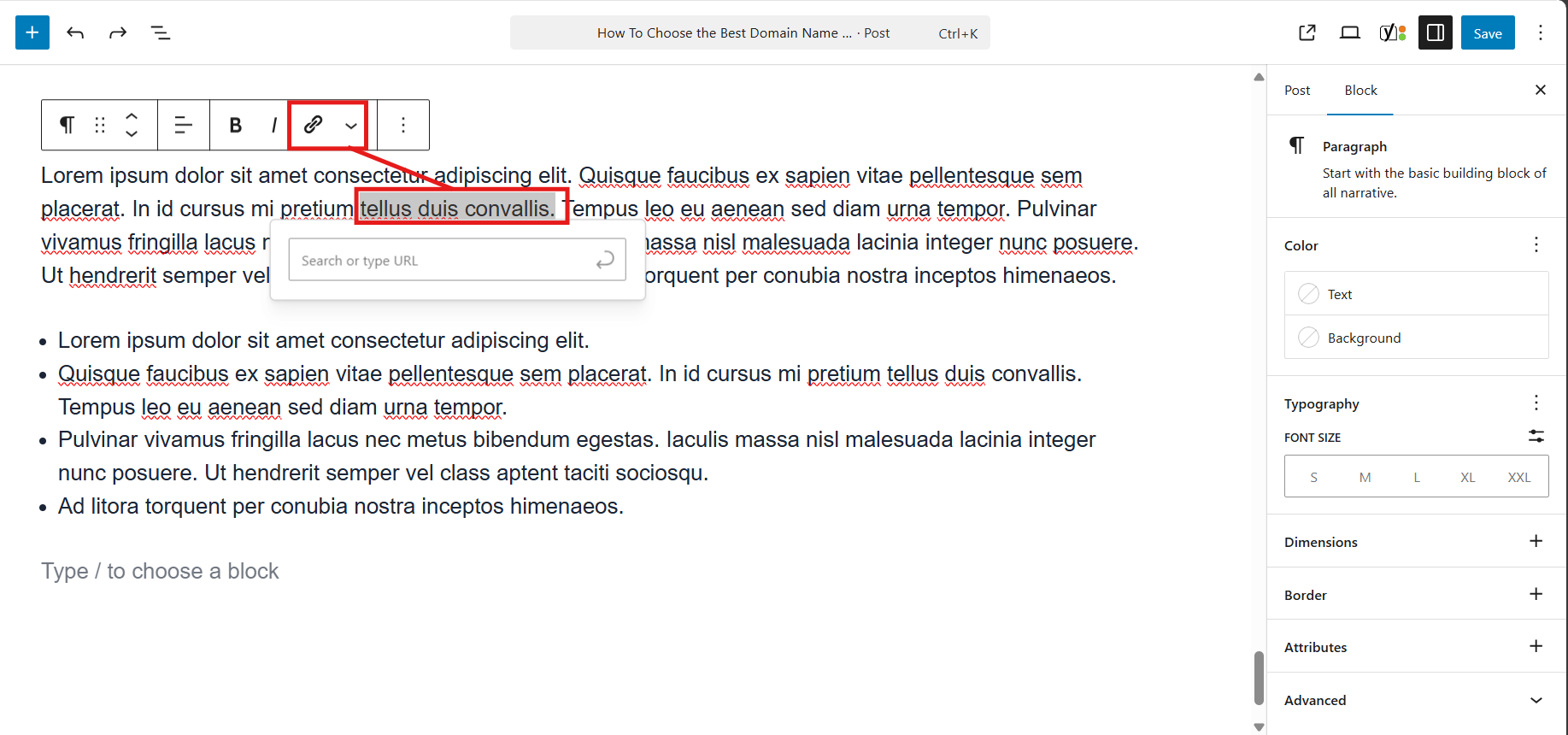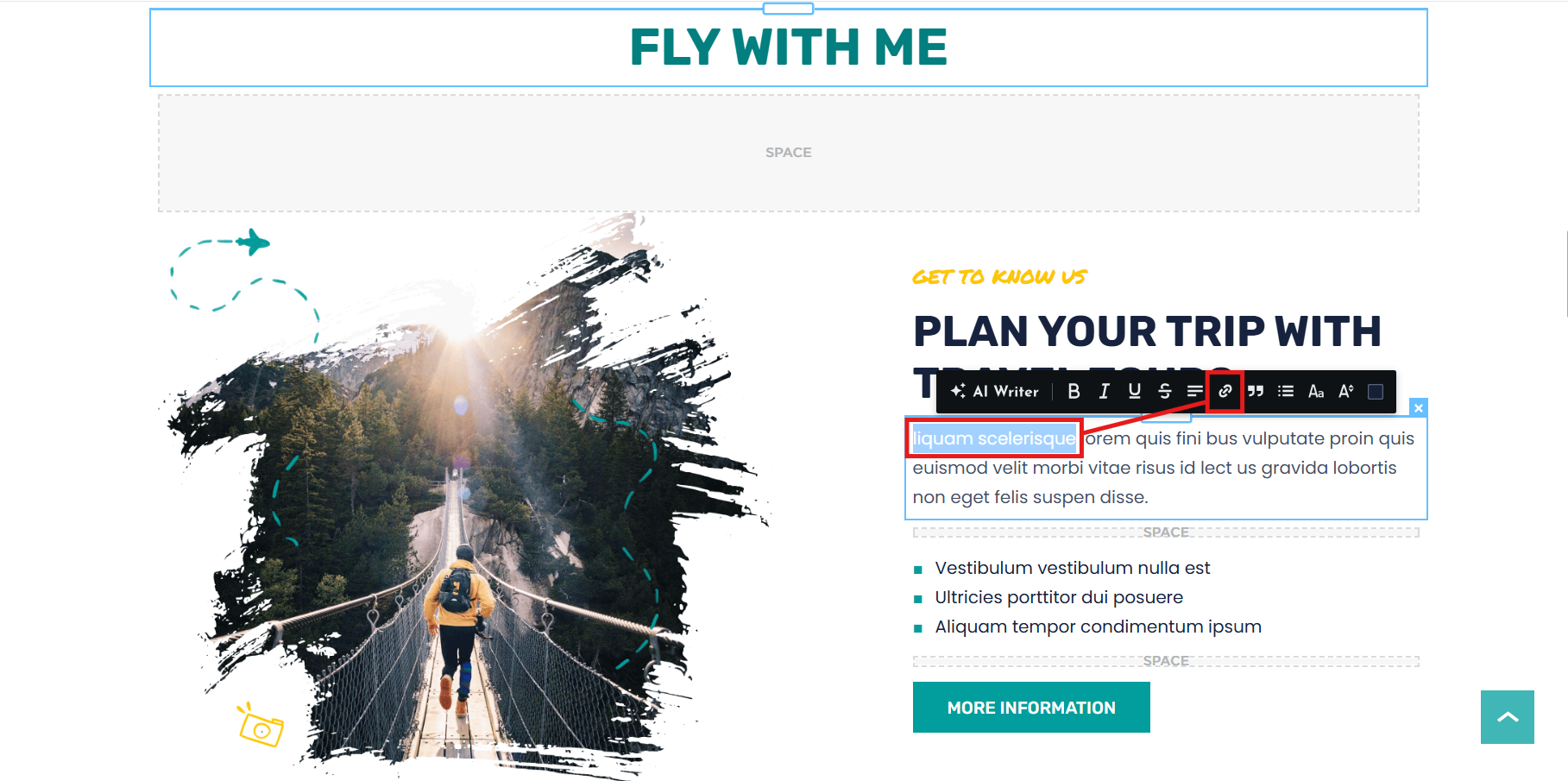Key takeaways:
- Anchor text helps users and search engines understand the context of the linked page.
- Follow best practices when creating anchor text to improve SEO and avoid penalties.
- As SEO trends evolve, how we create anchor text must adapt.
Adding links to your blog or website involves more than just pasting a uniform resource locator (URL). The words you choose to turn into a link can affect how search engines read your content. This clickable text is called anchor text, and it plays a bigger role in SEO than most people think.
In this guide, we’ll break down what anchor text is, how it works, and how to use it effectively to help your site rank better and stay user-friendly.
What is an anchor text?
Anchor text is the linked text that directs you to a new webpage. It’s often an underlined text or phrase highlighted in blue that is used to provide context to the linked page you will be redirected to.

On a web page, an anchor text looks like one in the above image. It has a different font color from the rest of the text, and the cursor changes when you hover over it.
How does an anchor text work?
When you click on the anchor text, it directs you to a different page or website. This feature makes it easy for users to navigate through related content. For example, when you see a link like “Check out our SEO guide here,” clicking on the anchor text, SEO guide here, takes you to another resource on the topic.
Types of anchor text
- Exact match
- Partial match
- Branded
- Generic
- Naked link
- Images
Anchor text can come in several different forms, and each type can impact how search engines and users perceive the linked content. Let’s take a look at the most common types of anchor text:
| Anchor text type | Description | Example | SEO impact |
| Exact match | Uses the exact keyword or phrase you want to rank for. | SEO tips | Can boost SEO for that keyword, but overuse may lead to keyword stuffing penalties. |
| Partial match | Includes variations or related terms of the target keyword. | Learn about SEO strategies | Feels more natural and still provides SEO context without risking penalties. |
| Branded | Uses the name of your business or website. | Visit XYZ Company for more information | Great for brand recognition but doesn’t directly help with keyword rankings. |
| Generic | Uses non-descriptive phrases. | Click here, Read more, Check this out | Offers little SEO value because it lacks keyword context. |
| Naked link | Displays the raw URL as the link. | www.example.com | Not SEO-friendly but can be useful for citations or references. |
| Image anchor | Uses an image as the clickable link. The image’s alt text becomes the anchor text. | An image with alt text SEO tips tutorial | Good SEO practice if the alt text is descriptive and relevant. |
How do I create an anchor text link?
Content management systems (CMS) such as WordPress made adding a link to an anchor text easier by developing tools for this feature. Here’s how you can add a link to an anchor text on popular platforms:
WordPress
- Select the text you want to convert into a link.
- Select the link icon, which resembles a chain, in the toolbar.
- In the pop-up window, paste the URL of the page you want to link to.
- Press Enter or Apply, and the text will become an anchor link.

Network Solutions
- Highlight the text you want to link.
- Select the chain-like icon (Link) in the toolbar that pops up after.
- Under Link To, select URL from the first drop-down menu.
- Add the link in the second field, creating the anchor text link.

Wix
- Highlight the text you want to link.
- Click on the link icon in the text editor.
- Choose Web Address and enter the URL for the page.
- Click Done, and your anchor text link is created.
Squarespace
- Select the words you want to turn into a hyperlink.
- Click the link icon in the text toolbar.
- In the link settings, add the URL of the page.
- Press Apply, and the anchor text link will be ready.
Shopify
- Highlight the text you want to link.
- Click the Insert Link button in the text editor.
- Add the URL in the link field and click Apply.
Create manually using HTML
If you prefer adding the link to your anchor text the old-fashioned way, you can do so using HTML:
<a href="https://websitename.com/pageurl">Here lies your anchor text.</a>Why does anchor text matter in SEO?
Anchor text helps search engines understand what a linked page is about and, ultimately, what the destination page’s content is about.
As search engines crawl your website, they use anchor text to assess the relevance of the linked page. Using descriptive and relevant anchor text helps them figure out how your content fits into the broader topic.
For example, if your anchor text says, “Learn more about SEO best practices,” it tells search engines that the linked page is related to search engine optimization. This helps your page rank higher for related keywords in search engine results pages (SERPs).
However, using irrelevant or spammy anchor text can hurt your SEO efforts, so following best practices for creating anchor texts is important.
Anchor text best practices for SEO
It’s important to optimize your anchor text to improve your website’s SEO performance. Well-written anchor texts help search engines understand the content of your pages and guide users to relevant resources.
Here are some best practices to follow:
- Use descriptive and relevant anchor text
- Keep anchor text concise and natural
- Avoid overusing exactly matched keywords
- Diversify anchor text types
- Link to relevant pages
- Use internal linking effectively
- Avoid using too many links in one section
Let’s look at each one in more detail.
Use descriptive and relevant anchor text
Always choose anchor text that clearly describes the content of the linked page. Instead of using general phrases like ‘click here‘ or ‘read more,’ focus on keywords that give search engines a clear context of the linked page, like “SEO best practices for beginners.”
Keep anchor text concise and natural
Your anchor text should be short and easy to understand, typically 2–5 words. Long anchor text can be hard to read and may appear spammy. Focus on making it clear, natural, and aligned with the surrounding content.
Avoid overusing exactly matched keywords
While exact match anchor text can boost SEO, using it too often can trigger penalties for keyword stuffing. Instead, vary your anchor text with partial matches and relevant synonyms to make it more natural anchor text.
Diversify anchor text types
Don’t rely on one type of anchor text. Use a mix of exact match, partial match, and branded anchor text. This variety avoids over optimized anchor text and makes your links look more natural to users and search engines.
Link to relevant pages
Always link to pages that are closely related to the anchor text. For example, don’t link the text “SEO tips” to a page about website design. Relevant linking helps search engines understand your site structure and improves your rankings and helps improve the user experience by managing expectations regarding what the landing page you’re linking to is all about.
Use internal linking effectively
Internal links are as important as external links. They assist search engines in better mapping out your site’s structure and guide visitors to more relevant content on your site.
Avoid using too many links in one section
Too many links on a page appear spammy and reduce the value of each link. Focus on adding links where they add value, rather than overloading your content with them.
Common anchor text mistakes and SEO penalties to avoid
Misusing anchor text can hurt your website’s SEO. Here are some common mistakes to watch out for:
- Overusing exact match anchor text
- Using generic or vague anchor text
- Not diversifying anchor text types
- Linking to irrelevant pages
- Ignoring mobile optimization
Let’s take a closer look at each of them.
Overusing exact match anchor text
Using the same keyword too often in your anchor text can trigger penalties for keyword stuffing. Mix in partial matches or synonyms to keep it natural.
Using generic or vague anchor text
Phrases like “click here” or “read more” don’t provide context to search engines. Use descriptive anchor text that tells search engines what the linked page is about.
Not diversifying anchor text types
Relying only on a single anchor text type can make your links look unnatural. A mix of different types provides a variety that looks more organic to users and search engines.
Linking to irrelevant pages
Linking anchor text to unrelated pages can confuse search engines and hurt your SEO. Always make sure the linked page matches the topic of the anchor text.
Ignoring mobile optimization
If you don’t optimize your anchor links for mobile, they may not work well for mobile users. Mobile optimization for anchor text involves ensuring links are easy to tap with enough space around them, using readable font sizes, and testing links across various screen sizes to ensure they’re functional.
The future of anchor text in SEO
As SEO continues to evolve, the way we use anchor text will change alongside new trends in search engine algorithms and user behavior. Below are trends to watch for and how they’ll affect anchor text:
Increased focus on user experience
Google is placing greater importance on user experience. This year and in the future, anchor text will be more intuitive and aligned with user intent. Using natural, conversational anchor text will become more important as search engines aim to prioritize high-quality user experiences.
Contextual relevance over keyword-heavy links
In the coming years, search engines will continue to refine their ability to understand context. As algorithms become more sophisticated, anchor text should reflect contextual relevance rather than exact match keywords.
Mobile-first indexing
With mobile-first indexing becoming the norm, optimizing anchor text for mobile users is important. Ensure that links are easy to tap, load quickly, and are placed in accessible areas. As more users interact with websites via mobile devices, search engines prioritize sites optimized for mobile-first experiences.
Anchor your SEO success with the right text
Anchor text is a powerful SEO element that plays an important role in how search engines interact with your content. Using descriptive, relevant, and varied anchor text can improve your website’s SEO and enhance user experience.
To ensure your SEO efforts are successful, consider using Network Solutions’ SEO Services. Our expert team offers keyword optimization, content creation, and strategic link building to help boost your rankings and drive organic traffic.
Frequently asked questions
Anchor text is the underlined, clickable text connected to a link. An example of anchor text is “SEO guide” in the sentence “Learn more in our SEO guide.“
Anchor text is a word or phrase connected to a URL, helping users and search engines understand what the linked page is about. Keywords are the terms that best describe your content and people search for on Google. While keywords help optimize your pages’ content, anchor text links them together and gives them additional context. Both are important, but they serve different SEO roles.
Yes, but make sure they sound natural. Use descriptive language that includes keywords without overstuffing it. Also, repeating the same keyword or text in every link.
Google evaluates anchor text by looking at the words used in links to understand the context and relevance of the linked page. Descriptive and relevant anchor text helps Google understand what the target page is about, which helps improve rankings for related keywords.




